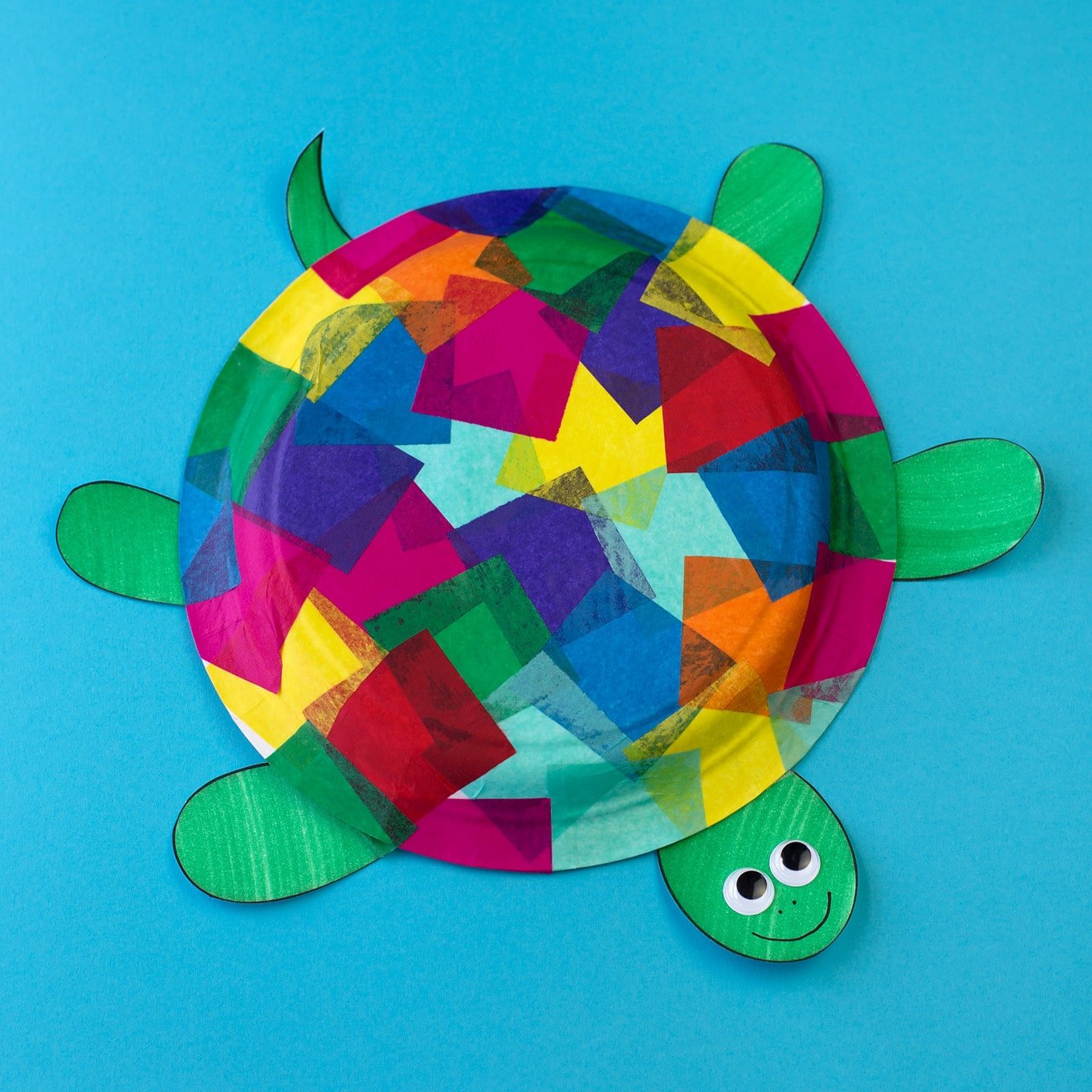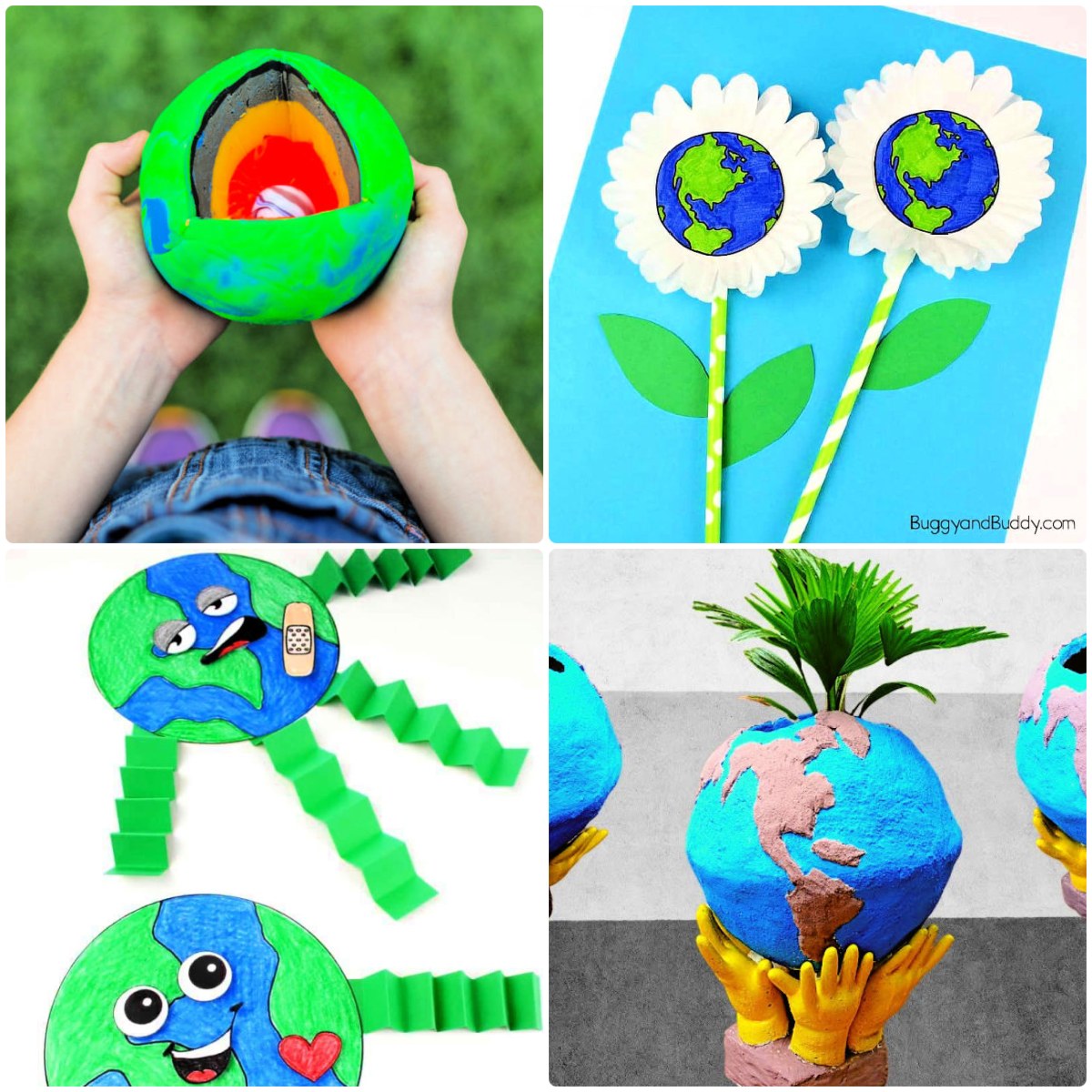Arts and crafts for 8-10 year olds: Prepare for a whirlwind of glitter, glue, and glorious messes! This isn’t your grandma’s knitting circle; we’re diving headfirst into a world where imagination reigns supreme and macaroni art is a high art form. Get ready to unleash the inner Picassos and Da Vincis (minus the questionable life choices, hopefully) as we explore the wonderfully messy world of crafting with kids.
We’ll cover everything from simple projects perfect for budding artists to more complex creations that challenge their growing skills, all while emphasizing the educational benefits and, of course, the sheer fun!
This guide is your compass through the creative chaos, offering practical tips, safety advice, and a treasure trove of ideas to inspire both you and your young artisans. From mastering fine motor skills to fostering self-expression, we’ll navigate the joys (and occasional spills) of crafting with this vibrant age group. So grab your glue guns, gather your glitter, and let’s get crafting!
Popular Arts & Crafts for 8-10 Year Olds
This age group is brimming with creativity and eager to explore new skills. Arts and crafts offer a fantastic avenue for self-expression, skill development, and fun! Let’s dive into some engaging activities perfect for 8-10 year olds, categorized by material type and highlighting their developmental benefits.
Arts and Crafts Categorized by Material Type
The following table lists various crafts, categorized by material, detailing their benefits for development.
| Material | Craft | Fine Motor Skills | Creativity & Problem-Solving |
|---|---|---|---|
| Paper | Origami | Precise folding enhances dexterity and hand-eye coordination. | Following complex folding instructions encourages spatial reasoning and problem-solving. |
| Paper | Paper Mache | Building and shaping requires controlled hand movements and layering techniques. | Creating unique shapes and designs fosters imagination and experimenting with different textures. |
| Fabric | Tie-Dye | Precise application of dye and rubber bands improves hand control. | Designing unique patterns and color combinations sparks creativity and experimentation. |
| Fabric | Sewing (simple projects like stitching felt shapes) | Using a needle and thread develops fine motor control and precision. | Designing and creating small stuffed animals or decorations enhances imagination. |
| Clay | Sculpting | Molding and shaping clay improves hand strength and dexterity. | Creating figures and objects allows for self-expression and problem-solving in 3D space. |
| Clay | Pinch Pots | Requires controlled pinching and shaping movements, improving hand strength. | Designing unique shapes and sizes encourages creativity and exploration of form. |
| Wood | Simple Wood Burning (with adult supervision) | Controlled hand movements for precise burning. | Designing patterns and images on wood develops artistic expression and problem-solving. |
| Recycled Materials | Cardboard Creations (houses, robots, etc.) | Cutting, gluing, and assembling cardboard enhances fine motor skills and hand-eye coordination. | Designing and building structures fosters creativity, problem-solving, and spatial reasoning. |
| Beads | Beading (simple bracelets or necklaces) | Stringing beads improves dexterity and hand-eye coordination. | Choosing colors and patterns promotes creativity and self-expression. |
| Natural Materials | Nature Collages | Gathering, arranging, and gluing natural items enhances fine motor skills. | Creating unique designs with natural materials fosters creativity and appreciation for nature. |
Simple Infographic: Origami Crane
This infographic visually guides children through the process of making an origami crane. It begins with a square piece of paper. Step 1: Fold the paper in half diagonally, then unfold. Step 2: Fold the paper in half diagonally the other way, then unfold. Step 3: Fold the top two corners to the center crease.
Step 4: Fold the top flap down. Step 5: Fold the bottom two corners to the center crease. Step 6: Fold the bottom flap up. Step 7: Fold the model in half. Step 8: Fold each side of the model down to the center crease.
Step 9: Gently open the wings. Each step would be accompanied by a clear illustration showing the folding technique. The final image would showcase a beautifully folded origami crane.
Adapting Crafts for Different Skill Levels
Children within the 8-10 age range exhibit varying skill levels. Adapting crafts ensures engagement and success for all.
Comparing Craft Complexity and Modifications, Arts and crafts for 8-10 year olds
Let’s compare origami, tie-dye, and sculpting, and suggest modifications for different skill levels.
- Origami: Simple origami figures like a boat or a simple box are suitable for beginners. More complex models like a crane or a star can challenge advanced crafters. Modifications include pre-creasing the paper for beginners or providing visual aids.
- Tie-Dye: Simple designs using a few colors and basic folding techniques are best for beginners. More intricate patterns and multiple color combinations can challenge advanced crafters. Pre-folded fabric or stencils can simplify the process for beginners.
- Sculpting: Starting with simple shapes like balls or snakes is ideal for beginners. More complex figures and detailed designs can challenge advanced crafters. Providing pre-made clay forms or using simpler tools can aid beginners.
Supporting Children with Fine Motor Skill Challenges
Children with fine motor skill challenges may require adapted tools or techniques. Larger tools, pre-cut materials, and alternative methods (e.g., using a sponge instead of a brush for painting) can be beneficial. Breaking down tasks into smaller, manageable steps can also improve success and reduce frustration.
Adapting a Craft for Diverse Learning Styles
To adapt a craft like tie-dye for diverse learning styles, provide visual instructions, verbal guidance, and hands-on demonstrations. Allow children to choose their own designs and color combinations to cater to individual preferences. For kinesthetic learners, emphasize the physical aspects of the craft. For auditory learners, provide clear verbal instructions. For visual learners, use clear visual aids and diagrams.
Safety Considerations in Arts & Crafts
Safety is paramount in any craft activity. Addressing potential hazards and establishing safe practices is crucial.
Common Safety Hazards and Preventative Measures
- Sharp Objects (scissors, needles): Always supervise children using sharp objects. Teach proper handling techniques and provide age-appropriate tools with blunt tips. Store sharp objects securely when not in use.
- Toxic Materials (paints, glues): Use non-toxic, child-safe materials whenever possible. Ensure proper ventilation and supervise children during use. Wash hands thoroughly after each activity.
- Hot Surfaces (glue guns, ovens): Never leave hot surfaces unattended. Teach children to avoid touching hot surfaces and use oven mitts when necessary. Adult supervision is crucial for activities involving heat.
Organizing a Safe and Organized Craft Space
A well-organized craft space minimizes clutter and reduces the risk of accidents. Keep materials properly stored in labeled containers, and ensure adequate lighting and workspace. Designate specific areas for different activities and tools.
Appropriate Adult Supervision Techniques
Adult supervision should be attentive and proactive. Monitor children’s activities closely, especially when using potentially hazardous materials. Provide clear instructions and guidance, and address any safety concerns promptly. Regularly check the workspace for any hazards.
Incorporating Educational Themes
Integrating educational themes into arts and crafts enhances learning and makes the activities more meaningful.
Integrating STEM Concepts
- Building Structures (Cardboard): Explore concepts of engineering, weight distribution, and stability by building structures from cardboard boxes.
- Simple Machines (LEGOs): Construct simple machines like levers and pulleys using LEGOs to understand mechanical principles.
- Geometric Patterns (Drawing/Painting): Create art using geometric shapes and patterns to learn about geometry and spatial reasoning.
Connecting Arts and Crafts with Historical or Cultural Themes
Explore historical periods or cultures through crafts. For example, create Native American beadwork, Egyptian hieroglyphics, or Victorian-era paper dolls. This approach adds a historical or cultural dimension to the activity.
Craft Projects Encouraging Storytelling or Creative Writing
- Puppet Making: Create puppets and write a story using them as characters.
- Comic Book Creation: Draw and write a comic book, developing storytelling and visual narrative skills.
- Diorama Building: Construct a diorama based on a favorite book or story, visualizing scenes and characters.
- Collage Storytelling: Create a collage that tells a story, using images and text.
- Mask Making: Design and create masks representing characters from a story or play, encouraging role-playing and narrative development.
Budget-Friendly Craft Ideas: Arts And Crafts For 8-10 Year Olds
Arts and crafts don’t have to be expensive. Many projects can be created using inexpensive or reusable materials.
Inexpensive or Reusable Materials
- Cardboard boxes
- Newspaper
- Yarn scraps
- Buttons
- Nature materials (leaves, twigs, stones)
Repurposing Household Items
Repurpose items like egg cartons, plastic bottles, and toilet paper rolls into unique craft supplies. Egg cartons can become flowerpots or insect habitats, plastic bottles can be transformed into planters or feeders, and toilet paper rolls can become building blocks or animal figures.
Budget Breakdown for a Simple Craft Project
Let’s consider making salt dough ornaments. Materials: Flour (already in pantry), salt (already in pantry), water (free), food coloring (inexpensive), baking time (free). Total estimated cost: minimal (only the cost of food coloring, if not already owned). Time investment: approximately 30 minutes for preparation and baking.
Encouraging Creativity and Exploration

The goal of arts and crafts is to foster creativity and self-expression. Providing the right environment is key.
Fostering Imagination and Self-Expression

Encourage children to explore their own ideas and create without limitations. Provide a variety of materials and let them experiment with different techniques. Avoid imposing strict rules or expectations. Celebrate their unique creations and perspectives.
Allowing Experimentation and Mistakes
Mistakes are part of the learning process. Encourage children to embrace their mistakes and learn from them. Reframing mistakes as opportunities for learning and growth promotes a positive attitude towards creativity.
Providing Positive Feedback and Constructive Criticism
Offer positive feedback focusing on effort, creativity, and problem-solving skills. Constructive criticism should be specific and focused on improving techniques rather than judging the final product. Always emphasize the process and the journey of creation rather than solely the outcome.
So there you have it – a journey into the captivating world of arts and crafts for 8-10 year olds! Remember, the real magic lies not just in the finished product, but in the process itself. Embrace the happy accidents, celebrate the creative explosions, and most importantly, have fun! Let your young artists explore, experiment, and discover the boundless possibilities that await them in the world of creative expression.
Obtain direct knowledge about the efficiency of how to make kid crafts through case studies.
After all, who needs a perfectly symmetrical snowflake when you can have one that’s gloriously, uniquely…
-them*?
FAQ Resource
What if my child doesn’t like a particular craft?
Don’t force it! Offer a variety of options and let them choose what sparks their interest. The goal is fun and exploration, not perfection.
How much adult supervision is really needed?
It depends on the craft and your child’s maturity level. Always supervise activities involving sharp objects, hot glue guns, or potentially messy materials. For simpler projects, close supervision might not be constantly needed but always be nearby.
What if my child gets frustrated?
Encourage perseverance, but also remind them that it’s okay to take breaks or try a different project. Focus on the process, not just the end result.
Where can I find inexpensive craft supplies?
Dollar stores, thrift shops, and even your own recycling bin are great places to find budget-friendly materials! Get creative with repurposing!


